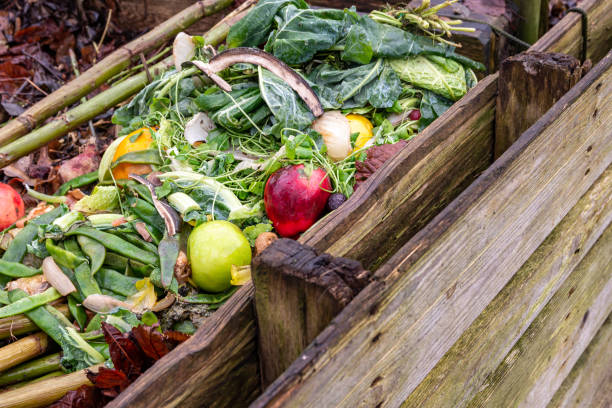Composting is a great way to recycle organic materials and create nutrient-rich soil for your garden. Here’s a step-by-step guide on how to make compost:
- Materials You’ll Need:
- Compost bin or pile: You can use a dedicated compost bin, a pile in your yard, or even a simple DIY enclosure made from materials like wire mesh or wooden pallets.
- Green and brown materials: Compost requires a balance of green materials (rich in nitrogen) and brown materials (rich in carbon). Green materials include kitchen scraps and fresh yard waste, while brown materials include dry leaves, straw, and cardboard.
- Water: Compost needs to be kept moist, so access to water is essential.
Steps to Make Compost:
- Choose a Location: Place your compost bin or pile in a well-drained area with good air circulation. It’s best to have it in a spot that’s convenient for you, such as near the kitchen or garden.
- Layering: Start by layering your green and brown materials. Aim for a ratio of about 2:1 or 3:1 brown to green materials. This balance ensures proper decomposition and minimizes odors. You can start with a layer of brown material at the bottom to help with aeration.
- Chop or Shred: Chop or shred larger materials like branches or cardboard into smaller pieces to speed up decomposition.
- Keep it Moist: Your compost pile should be as moist as a wrung-out sponge. Water it occasionally to maintain this level of moisture. Too much water can cause odors, so be cautious not to overwater.
- Turn the Pile: Every few weeks, turn the compost pile with a pitchfork or shovel. Turning aerates the pile, which helps decomposition. You can also add more green and brown materials as you turn it.
- Maintain the Pile: Keep an eye on your compost. If it’s too dry, add water; if it’s too wet, add more brown materials. Also, avoid adding meat, dairy, or oily foods to prevent pests and odors. Instead, stick to vegetable scraps, coffee grounds, and eggshells.
- Wait for Decomposition: Compost can take several months to a year to fully decompose, depending on various factors, such as the size of the pile, materials used, and environmental conditions.
- Harvest the Compost: When the compost has turned into a dark, crumbly, earthy-smelling material, it’s ready to use in your garden. You can sift it to remove any larger, uncomposted materials.
Remember that composting is a natural process, and it may vary in speed and quality depending on the factors involved. Patience and regular maintenance are key to successful composting. Once you have rich, homemade compost, you can use it to enrich your garden soil, improving its texture and fertility while reducing the need for chemical fertilizers.
